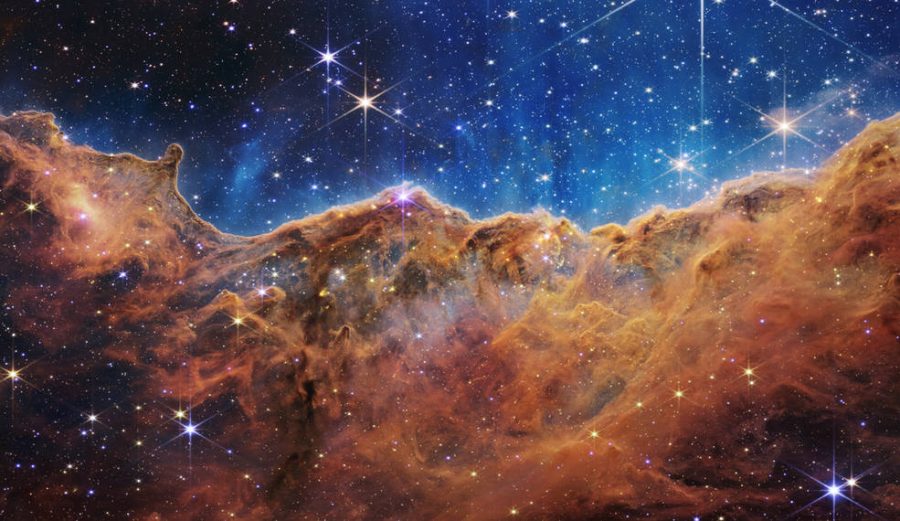NASA Webb telescope captures unprecedented images
Photo of the Carina Nebula, a type of interstellar cloud.
NASA’s new James Webb Space Telescope that launched in December of 2021, captured images of galaxies, planets, stars, and nebulas that did not disappoint!
On July 12 of this year, the James Webb Telescope sent NASA the first images it had taken of different places in the universe. These Images are the sharpest and furthest into deep space images captured of the universe. The first five images NASA received were the Carina Nebula, Stephan’s Quintet, Southern Ring Nebula, WASP-96 b, and SMACS 0723.
Paul Byne, a planetary scientist at the University of Washington released a statement to the science and technology online magazine inverse saying these new images will help scientists discover new things. “Each and every one of these images set us on a new course for understanding the Universe around us,” he said.
Engineers who helped make the telescope, made major improvements from the Hubble Telescope. While the Hubble Telescope was able to see 13.4 billion light years away, the James Webb Telescope is able to see further at 13.6 billion light years away. The Webb Telescope camera views in mostly infrared which is something Hubble was not known for because most Hubble shots were another style. Being able to see the universe in infrared helps scientists view areas where dust and gas are present and helps observe any place in the universe that is too cool to emit visible light.
President Joe Biden and Vice President Kamala Harris presented the first images the Webb Telescope took, during a public event at the White House. Just before presenting the first image, Harris stated that “this telescope is one of humanity’s greatest engineering achievements.”


